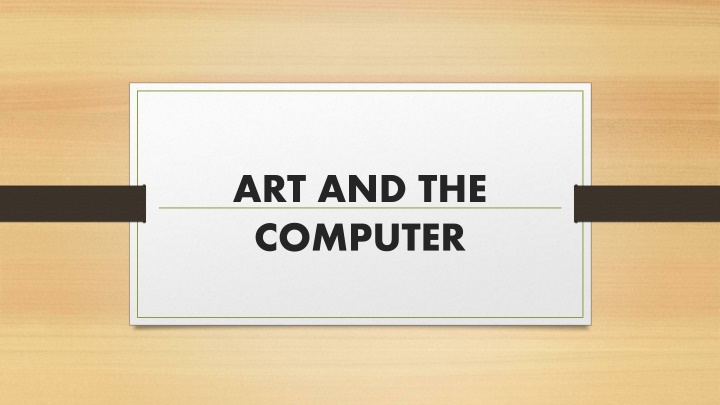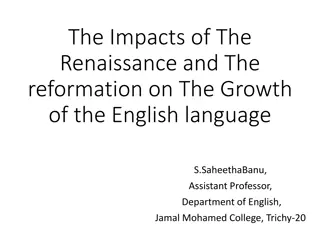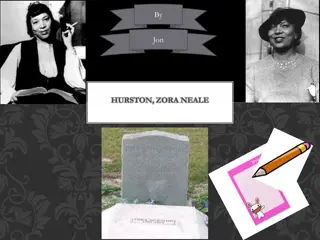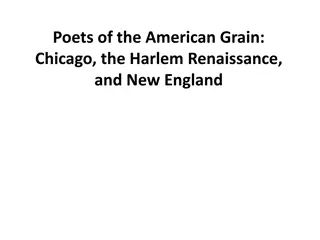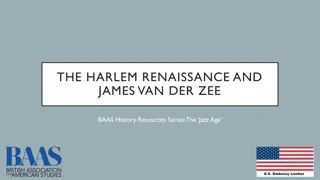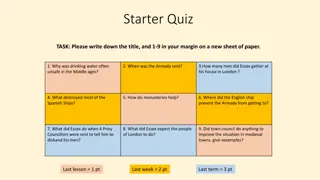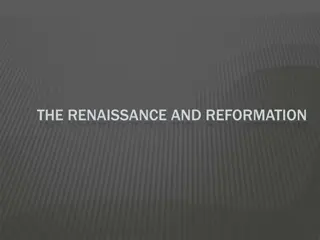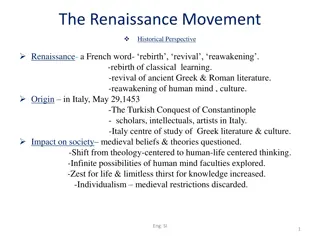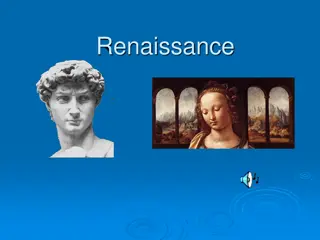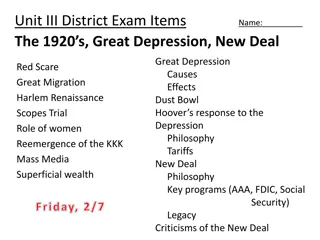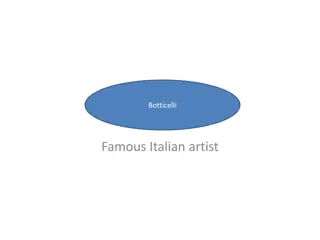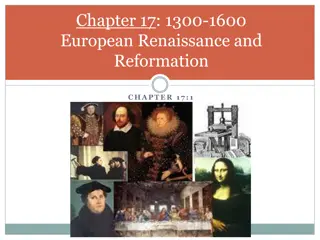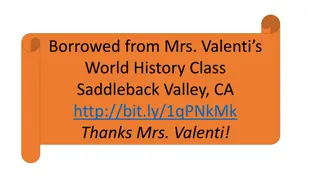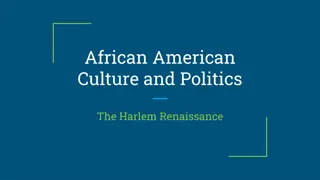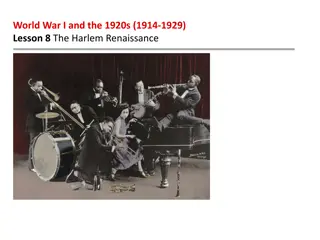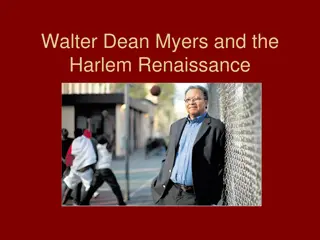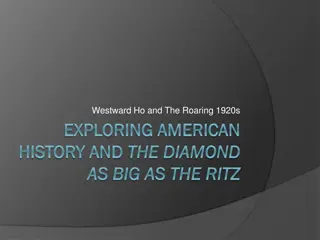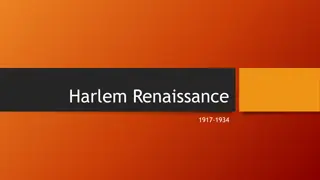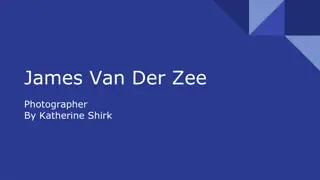Harlem Renaissance: Exploring Cultural Evolution and Social Transformation
The Harlem Renaissance, spanning from 1917 to 1934, was a pivotal period in African American history marked by artistic, cultural, and intellectual flourishing. This era witnessed significant social change, migration, and the rise of influential figures advocating for civil rights. From the creative achievements of luminaries like Langston Hughes to the socio-political impact of movements like the Great Black Migration, the Harlem Renaissance reshaped perspectives and challenged racial norms. Dive into a transformative chapter in American history that highlights resilience, creativity, and the pursuit of equality.
Download Presentation

Please find below an Image/Link to download the presentation.
The content on the website is provided AS IS for your information and personal use only. It may not be sold, licensed, or shared on other websites without obtaining consent from the author.If you encounter any issues during the download, it is possible that the publisher has removed the file from their server.
You are allowed to download the files provided on this website for personal or commercial use, subject to the condition that they are used lawfully. All files are the property of their respective owners.
The content on the website is provided AS IS for your information and personal use only. It may not be sold, licensed, or shared on other websites without obtaining consent from the author.
E N D
Presentation Transcript
ART AND THE COMPUTER
Art is no longer done only on paper using paint and other coloring materials. The new form of art created using the computer is called digital art. Digital Art is also considered real art because the same artistic skills are applied by the artist.
Creating Art With The Computer HISTORY OF DIGITAL ART In the early 1960 s, Desmond Paul Henry invented the Henry Drawing Machine from a converted World War ll bombsight computer. His work was shown in Reid Gallery in London 1962, after his machine generated art won him the privilege of a one-man exhibition.
In 1963, James Larsen of Sn Jose State University wrote a computer program based on artistic principles. This resulted in an early public showing of computer art in San Jose, California on May 6 1963. By the mid- 1960 s people involved in the creation of computer art were engineers and scientist because they had access to the only computing resources available at university scientific research ;abs.,
Adobe Systems, founded in 1982, developed the PostScript language and digital fonts, making drawing, painting, and image manipulation software popular. Adobe Illustrator, a vector drawing program based on the B zier curve introduced in 1987 and Adobe Photoshop, written by brothers Thomas and John Knoll in 1990, were developed for use on Macintosh computers and compiled for DOS/Windows platforms in 1993.
Computer Generated Visual Media Computers are used today for Desktop Publishing (magazines, Print media, etc) Graphic Design 2D ART This is emulating traditional art using computer software.
3D Graphics/3D Art (till and Animated) 3D graphics are created via the process of designing imagery from geometric shapes, polygons, or NURBS curve to create three-dimensional objects and scenes for use in various media such as film, television, print, rapid prototyping, games/stimulations, and special visual effets.
Prominent artist who started this in the 1950s-70s were Desmond Paul Henry, A. Michael Noll, Nam June Paik, John Whitney, and Charles Csuri. TOP DIGITAL ARTIST INCLUDE: Top VFX Companies- Pixar/industrial Light and Magic/WETA digital Top Video Game Companies- Square Enix/ Kojima Productions/ Vanillaware
DRAWING TOOLS Pencil Tool- the tool that draws free lines onto the picture. Line Tool- used to create perfectly straight lines. Paint Bucket- used to fill an are with solid color or pattern.
Square Tool- used to create perfect square or rectangular shapes. By changing the line thickness in the line tool, you could change the thickness of the square Circle Tool- similar to the Square tool, it is used to create perfect circles, and the thickness can be changed using the line tool.
SELECTION AND ERASING TOOLS Erasing Tools- these provide several different ways to create various parts, or all of your drawing. Moving Truck- allows various parts of the image to be selected ad moved around the canvas. There are different shapes and sizes that the selections can be, such as circles or rectangles. Dye Tool- use to pick out colors already used somewhere in the canvas.
TEXT INSERTION Text Tool- includes rubber stamp of the letters f the alphabet which speak the name of the letter when selected. Typing Tool- includes basic abilities to add text to the image in different fonts and various sizes. Opacity- the degree to which something reduces the passage of light. Undo- cancels, annuls, or reverses an action or its effect.
